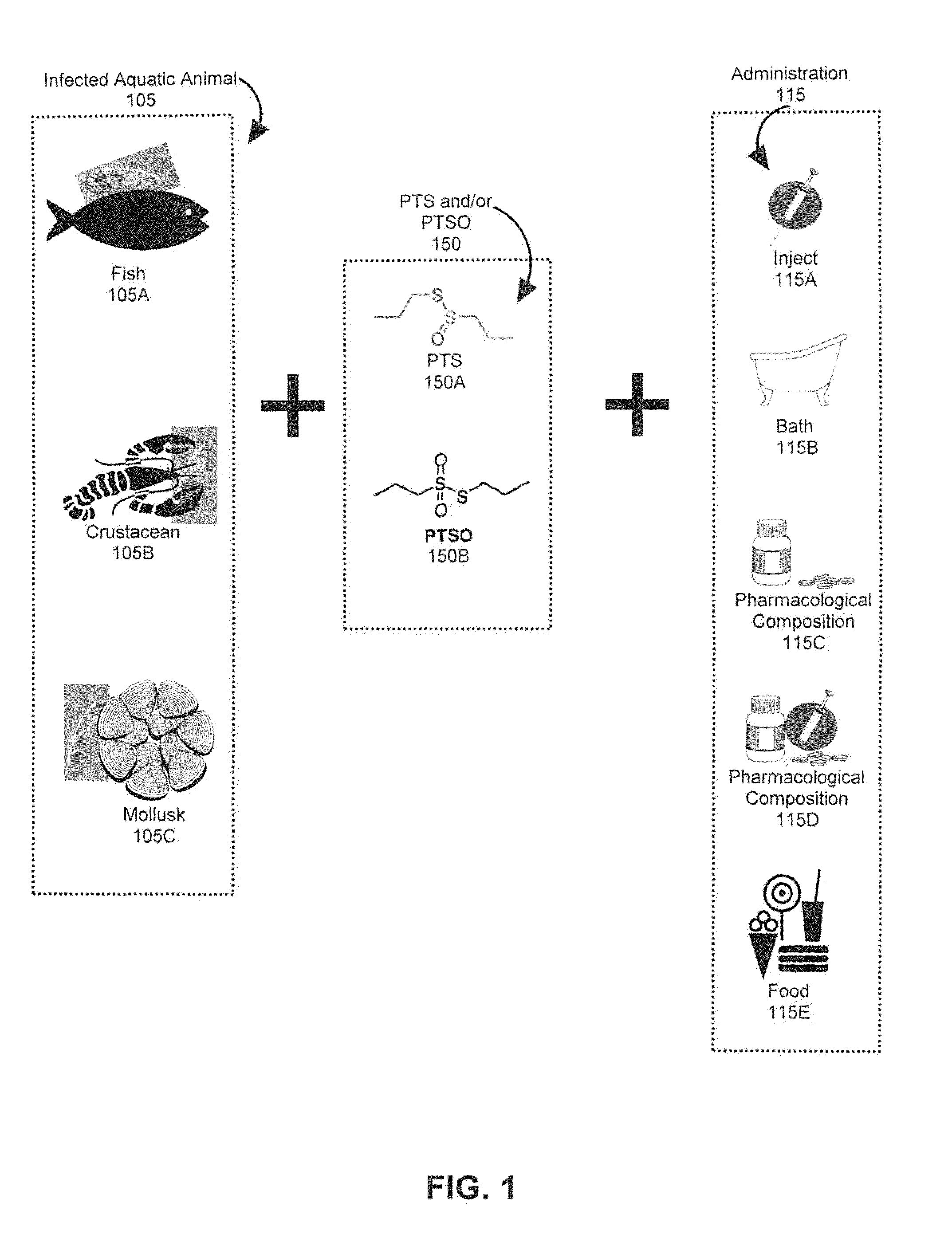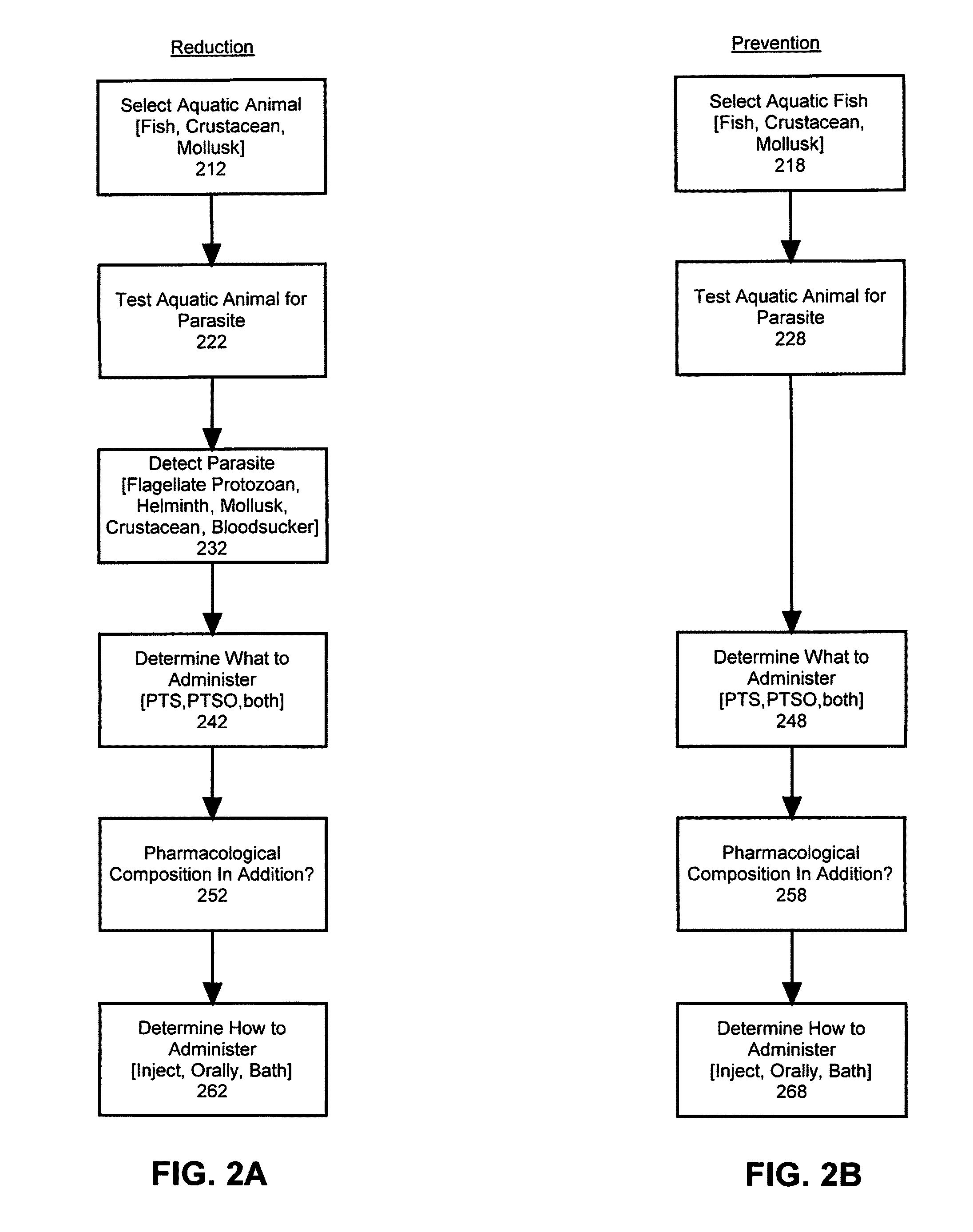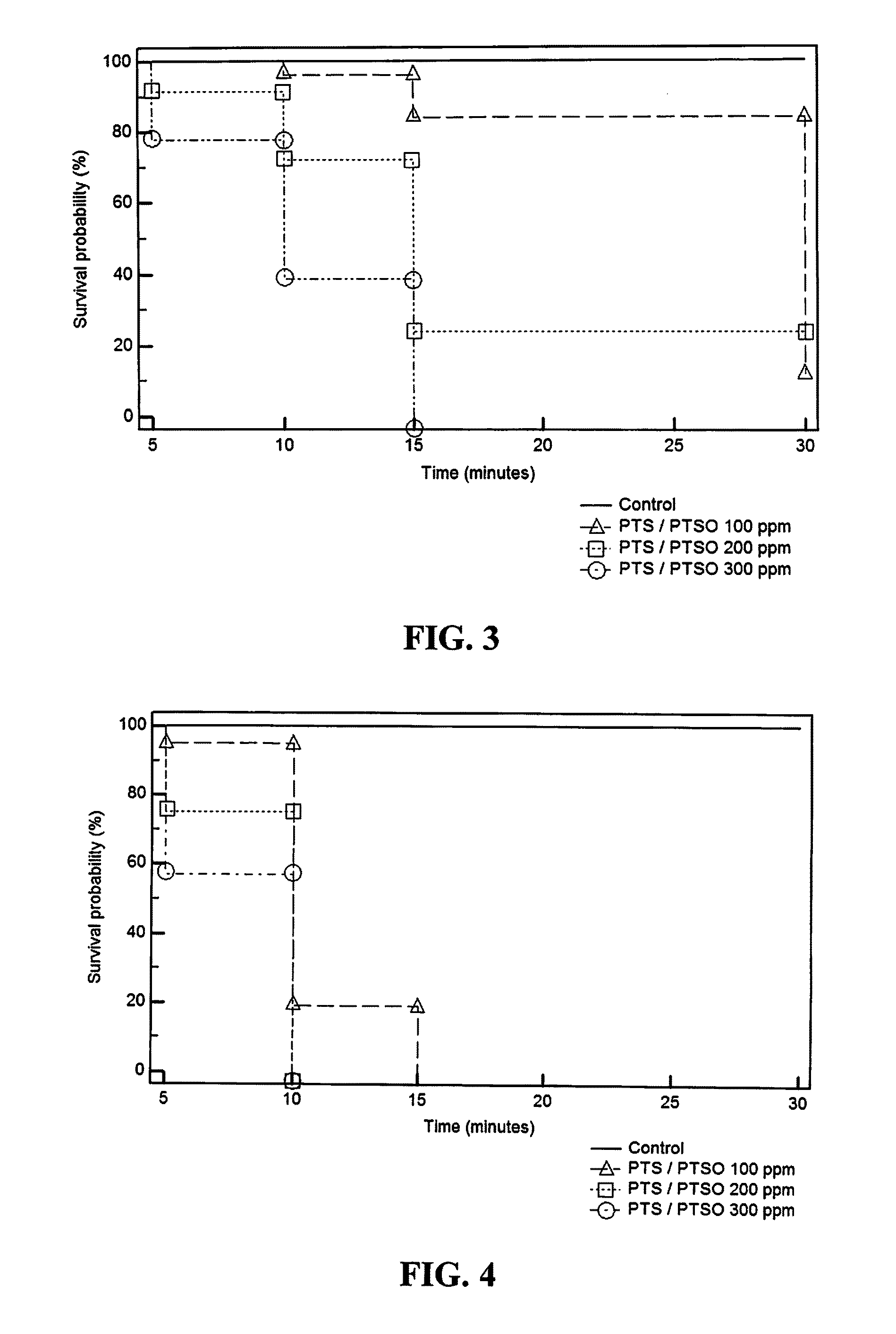Use of propyl propane thiosulfinate and propyl propane thiosulfonate for the prevention and reduction of parasites in aquatic animals
- Summary
- Abstract
- Description
- Claims
- Application Information
AI Technical Summary
Benefits of technology
Problems solved by technology
Method used
Image
Examples
example 1
[0037]The parasiticide efficacy of a mixture of propyl propane thiosulfinate (PTS) and propyl propane thiosulfonate (PTSO) was measured in vitro against Caligus rogercresseyi.
[0038]Upon receipt in the laboratory, the wild adult females and males were kept in filtered seawater (125 μm membranes) in absolute darkness inside a thermo-regulated chamber at 12° C. The egg sacs were removed gently from females using a fine-tipped forceps and placed in separate beakers with 500 mL of filtered seawater in the conditions described above until spawning. The fish were then separated into the different stages: Nauplius I, Nauplius II, Copepodite and Adult for subsequent in vitro susceptibility studies.
[0039]In order to evaluate effectiveness, several bioassays were performed in triplicate with different concentrations of propyl propane thiosulfinate (PTS) and propyl propane thiosulfonate (PTSO) at each stage: Nauplio I, Nauplio II, Copepodite and Adult. In total, 40 Caligus were used per test a...
example 2
[0040]In this example, a study of oral treatments of Ichthyobodosis in rainbow trout with different concentrations of Propyl propane thiosulphonate (PTSO) administered into feed was conducted.
[0041]Rainbow trout Oncornynchus mykiss were obtained from a local fish farm and acclimatized for at least 10 days before assay in 100 l tanks with aeration in closed systems of water (15±2° C., pH 7-7.5). The natural light-dark cycle was simulated (12 h light: 12 h dark). Fish were fed twice per day with a commercial feed (EFICO, Biomar, Spain). Parasite-free fish were experimentally infested by holding the parasite-free fish 25 days in a 100 l tank that also contained fish showing high-intensity infestation (20 uninfected fish to 10 infected fish). Twenty (20) fish were then sampled at random for determination of infestation intensity, which was determined to be a high intensity infestation in at least 50% of fish.
[0042]Fish were anaesthetized by immersion in bath with 100 ppm of Tricaine met...
example 3
[0045]The objective of example 3 was to examine the activity of propyl propane thiosulphonate (PTSO) and propyl propane thiosulfinate (PTS) against L3 larvae of type I Anisakis and Hysterotylacium aduncum to explore the possible use of these compounds for prophylaxis treatments.
[0046]L3 of Anisakis type I and Hysterotylacium aduncum were collected by dissecting the fish Micromesistius poutassou (blue whiting) and Trachurus trachurus (mackerel) fished in the Cantabric sea, and selecting only larvae with a length greater than (>) 2.0 cm in the case of Anisakis, and greater than 0.8 cm for Hysterotylacium.
[0047]Larvae were axenised in antibiotic solution (Iglesias et al., 1997), introduced into polystyrene plate wells with 2 ml of sterile solution of 0.9% NaCl and the different concentrations of PTS alone, PTSO alone, and both PTS and PTSO (75, 200, 300 and 500 ppm) and then incubated at 36° C. in a 5% CO2 atmosphere. As controls, larvae were assayed without test compound under identi...
PUM
| Property | Measurement | Unit |
|---|---|---|
| Fraction | aaaaa | aaaaa |
| Fraction | aaaaa | aaaaa |
| Concentration | aaaaa | aaaaa |
Abstract
Description
Claims
Application Information
 Login to View More
Login to View More - R&D
- Intellectual Property
- Life Sciences
- Materials
- Tech Scout
- Unparalleled Data Quality
- Higher Quality Content
- 60% Fewer Hallucinations
Browse by: Latest US Patents, China's latest patents, Technical Efficacy Thesaurus, Application Domain, Technology Topic, Popular Technical Reports.
© 2025 PatSnap. All rights reserved.Legal|Privacy policy|Modern Slavery Act Transparency Statement|Sitemap|About US| Contact US: help@patsnap.com



